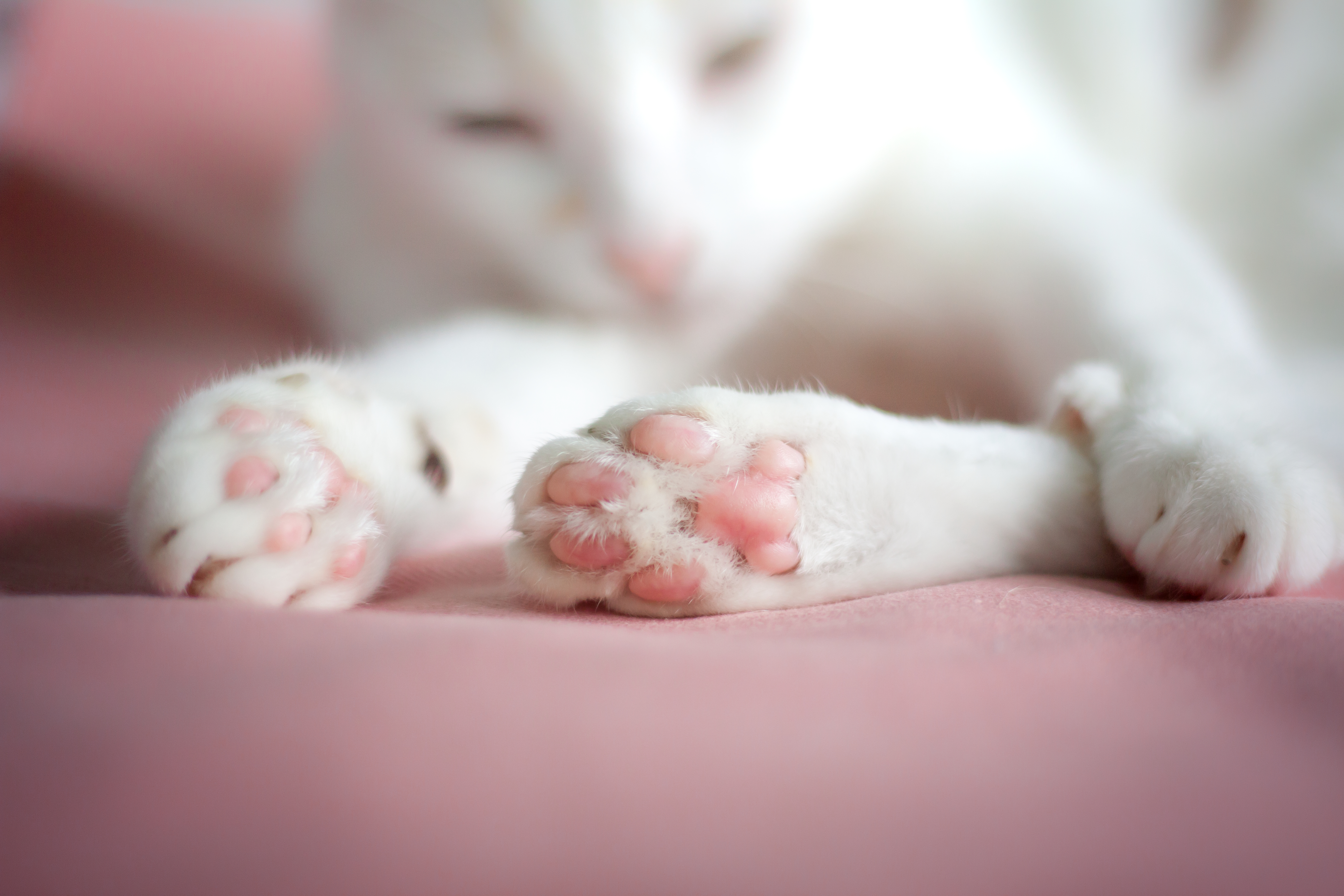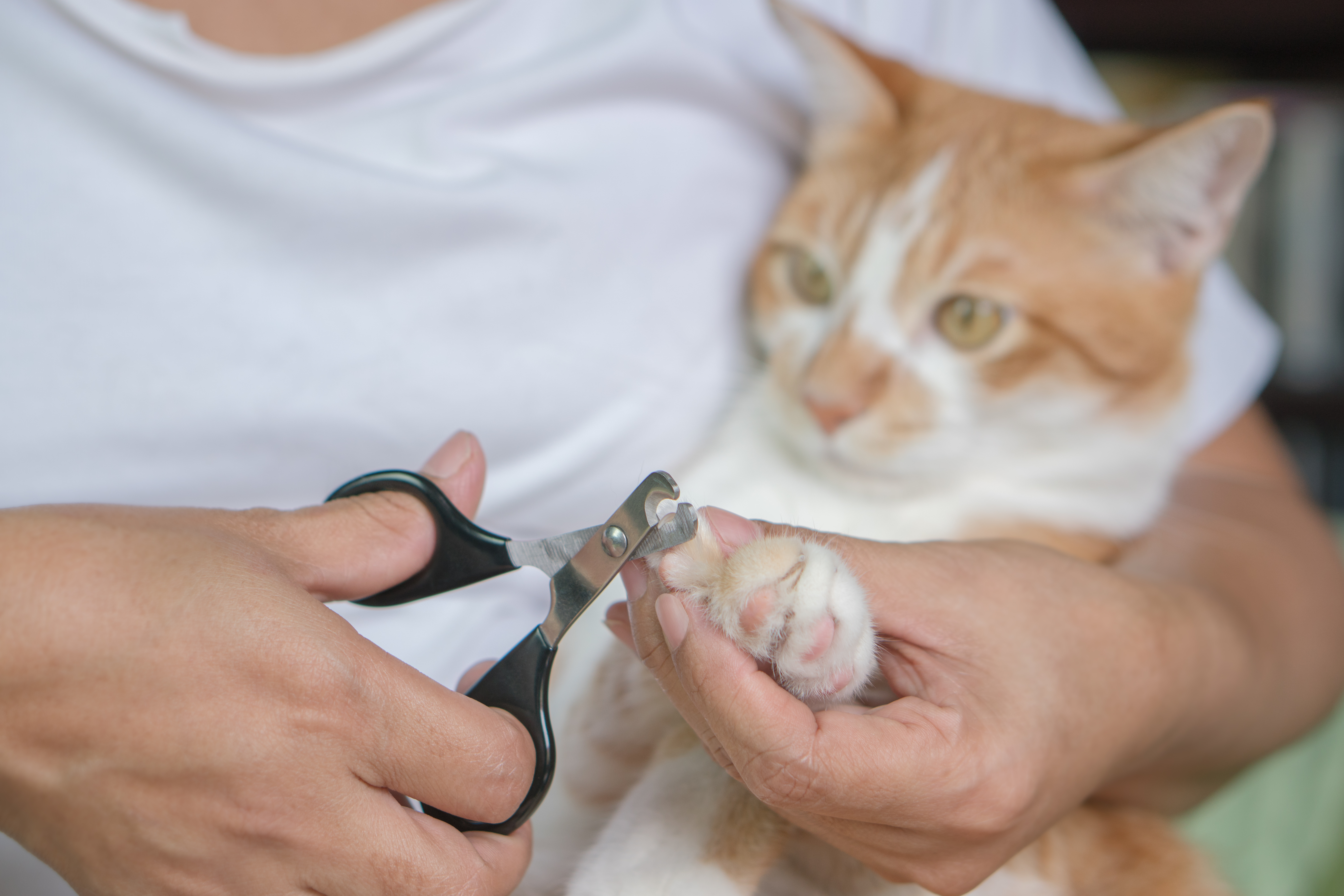
This is Why You Need to Keep Your Cat's Paws Healthy and Clean
Cats are always on their feet, but we don’t always think to check on the health of their paws. While it’s true that cats clean themselves from head to toe, your cat’s paws are a delicate area you should be sure to pay special attention to.
Taking care of your cat’s paws doesn’t have to be a long or frustrating process for you or the cat, but it is a habit that you should instill as early as possible—particularly if it goes outside from time to time.
Here’s what you should know about cat paw care.
Possible paw problems
Your cat’s paw pads are made of a tough material that can stand up to a lot of pressure and friction. However, a number of things can happen to these paws that might make it painful for your cat to walk, jump and climb or might even cause more serious health problems if they aren’t detected.

Puncture wounds
One of the most common paw injuries that occurs in cats is puncture wounds. Although these can be caused by just about any sharp object—such as a broken piece of glass or a thorn from a rosebush—they are often caused by overgrown nails that have curved and embedded themselves in the paw pad.
This type of wound can be extremely painful for your cat, causing it to limp or avoid landing on that foot. And, because the problem typically stems from an overgrown nail, your cat may not be able to remove the offending object on its own. If left untreated, these wounds could lead to serious infections.
Infections
Infections of the paw pad are also possible, whether originally caused by a puncture wound, over-grooming, cuts or burns. If your cat continues to walk on the foot or licks the area to soothe it, it may introduce bacteria or viruses that could enter the skin and cause an infection.
Infected paw pads might swell, appear red and have a colored discharge or pus. Infections should be treated as quickly as possible to prevent them from spreading to other areas of the body.
Dryness and cracking
Cats that go outside and walk on very hot or very cold surfaces may develop dry or cracked paw pads. These, too, can be quite painful or irritating and may lead to incessant licking and infection.
If caught early, though, dry paw pads can be moisturized and cared for so they return to normal.
Caring for your cat’s paws
In order to prevent problems like puncture wounds, infections and dryness from affecting your cat’s mobility and fun, you should take care to inspect them, keep them clean and treat any potential problems right away.

- Inspect daily: Each day, make a point to quickly inspect the bottom of your cat’s feet. Check the paw pads for cuts, scrapes, dryness or wounds and make sure that the pads aren’t dirty or discolored. If you notice anything strange, clean and treat the paw pads at home or seek veterinary care.
- Wipe them clean: If you let your cat go outside, it’s a good idea to wipe its paws clean with a damp cloth as soon as it returns to the house. This will not only remove any dirt or grime your cat could track inside, but will also remove any harmful pesticides, salts and chemicals that might make your kitty sick if it licks them off later.
- Nail care: From a young age, make a point to trim your cat’s nails so that they don’t overgrow and puncture the paw pad. Additionally, provide your cat a scratching post so it can tend to its own nail care over time. While younger cats will shed their claws using scratching posts, they may still need regular trims. Elderly cats may need more frequent trims as they use the scratching post less.
- Exercise precaution: If a drinking glass or plate was broken in the home, or you are aware of a patch of sharp thorns outside, take care to prevent your cat from entering these areas. Small, sharp objects can get lodged in your cat’s paw quickly and cause problems.
- Protect the paws: If your cat is experiencing dryness or cracking of the paws, use some animal-safe moisturizer to prevent further irritation. If you’re taking your cat for a walk outside, you may also want to use socks or booties to protect its paw pads—but don’t put these on if your cat goes outside to roam to ensure it can still use its claws to protect itself!
By staying vigilant about your cat’s paw care, you’ll be able to prevent problems before they begin and identify issues before they have a chance to worsen.


